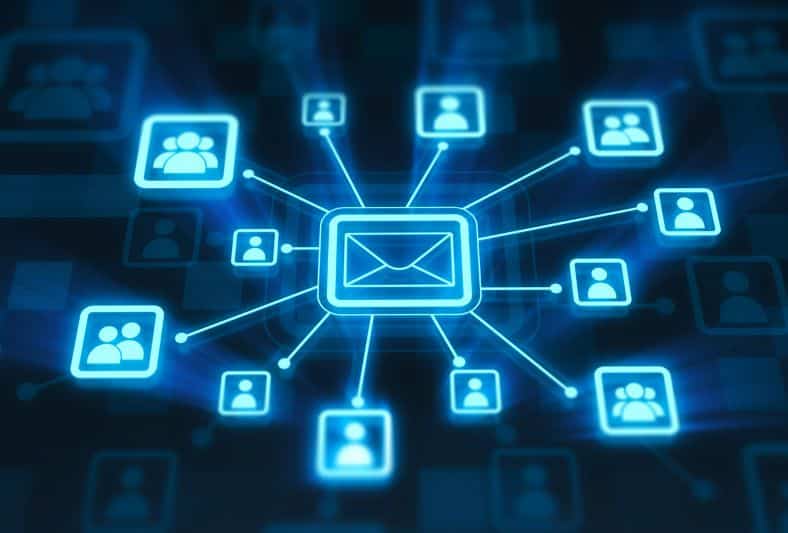10 Ideas to Segment and Personalize Your Email Marketing

Email marketing is a powerful tool. But to truly harness its potential, you need to go beyond generic blasts.
Enter email personalization and segmentation. Though not new, these strategies can transform your campaigns, making them more relevant and engaging.
By tailoring your messages to specific audience segments, you can boost open and click rates and reduce the number of recipients who unsubscribe.
In this post, we’ll explore 10 ideas to help you segment and personalize your email marketing. Let’s dive in.

The Power of Combining Segmentation and Personalization
Combining segmentation and personalization can significantly enhance your email marketing strategy. Segmentation allows you to group your audience based on shared characteristics. Personalization tailors the message for each group, making communication more effective.
When used together, these methods can create a more tailored experience for the recipient. This approach increases the likelihood that they will find the email content relevant. The ultimate goal is to make your audience feel valued and understood.
One of the biggest advantages of using segmentation and personalization is improved engagement. When recipients see emails that speak directly to their needs or interests, they’re more likely to engage. Higher engagement can lead to better relationships and increased loyalty to your organization.
Moreover, personalization improves the number of people who click or take action from your emails – whether that’s becoming a member or customer, registering for an event, or purchasing a program or product. When you deliver targeted messaging based on what you know about your recipients, those recipients are more likely to take action. Combining personalization and segmentation techniques builds their trust and affinity for your organization because they feel like you KNOW them and provide continuous value.
1. Demographic Segmentation
Demographic segmentation involves dividing your email list based on factors such as age, gender, income, and education. This approach lets you tailor your messages to fit the unique needs and interests of each group. It’s a straightforward yet powerful strategy for targeted messaging.
For instance, young adults and retirees have different lifestyles and priorities. By understanding these differences, you can craft personalized emails that resonate. Content that speaks to someone’s experience can foster a deeper connection with your audience.
Effective demographic segmentation requires accurate data collection. This information helps you create relevant and engaging content for each segment. As a result, your emails become more meaningful and likely to capture your audience’s attention, ultimately boosting engagement and conversion rates.
2. Behavioral Segmentation: Crafting Campaigns Based on User Actions
Behavioral segmentation focuses on how subscribers interact with your brand. This approach uses data like purchase history, browsing habits, or email open rates to tailor your messaging. By understanding these behaviors, you can send more relevant and engaging messages to each segment.
For example, you can identify members or customers who’ve visited a webinar (with Higher Logic’s web-tracking tools) and follow up with personalized emails offering discounts or reminders. Or, you could reach out to individuals in your online community who’ve interacted with discussion threads about a specific topic to encourage them to sign up for a related event. These targeted emails can help recover lost opportunities and/or increase revenue.
Behavioral segmentation allows you to respond to specific user actions, which makes your emails timely and contextually relevant. This kind of personalization goes beyond generic messaging, ensuring that your communication aligns with the interests and needs of each segment. This leads to higher conversion rates and improved customer satisfaction.
3. Geographic Segmentation: Localizing Your Email Messages
Geographic segmentation allows you to tailor your emails based on a subscriber’s location. Understanding where your audience resides can significantly enhance the relevance of your messages. By aligning content with regional preferences or events, you create a more personal connection.
For instance, Higher Logic has customers primarily in the United States, Canada, and the Asia-Pacific Region (especially Australia and New Zealand). When we send campaigns about a “Summer” webinar to our U.S. customers, we need to send and email about a “Winter” email to our customers in Australia, and vise versa. This ensures that people don’t feel misunderstood or left out.
Moreover, you can use this segmentation to promote local events so that people nearby know about the opportunities closest to them. By informing local customers, you encourage visits and boost participation. Geographic segmentation helps foster a sense of understanding and relevance in your emails.
4. Engagement-Level Segmentation: Targeting Based on Interaction
Segmenting your email list based on engagement levels helps you tailor content to varying audience interests. By analyzing interaction data, you can craft messages that resonate with active and inactive subscribers differently. This approach ensures your emails remain relevant and appealing.
For example, engaged users might receive exclusive offers or sneak peeks to reward their loyalty. In contrast, less active subscribers could benefit from re-engagement campaigns aimed at reigniting their interest. These emails often highlight new features or personalized recommendations that entice them back.
By differentiating your strategies based on engagement, you maintain high open rates and reduce unsubscribes. Targeting interactions cultivates better relationships and fosters long-term audience loyalty, effectively enhancing your email marketing efforts.

5. Purchase History Segmentation: Personalizing Based on Past Behavior
Using purchase history (or engagement with specific programs like your volunteering, mentoring, or certification program) as a segmentation strategy can transform how you approach each customer. By analyzing past behaviors, you gain insights into preferences, enabling precise targeting with your email communication.
For members or customers who frequently purchase or engage with specific topics, consider sending tailored recommendations aligned with their buying and engagement patterns. These suggestions might include complementary products or new arrivals that match their interests. Engaging them with exclusive deals can also nurture brand loyalty.
Conversely, for members or customers who haven’t made a purchase in a while, reactivation emails with personalized discounts can spark renewed interest.
6. Personalizing Email Content Beyond Names
Personalization isn’t just about addressing the recipient by their name – in fact “First Name” personalization is kind of old and sometimes negatively impacts email performance at this point. To truly connect, consider all the data you have about your recipients and how you might personalize different aspects of your message (the body of the email, subject line, imagery, offers send times, etc.)
Consider, incorporating the recipient’s job title, company name, or industry, or someone’s web behavior (there’s web-tracking again). Calling out products or services that align with their work or that they’ve shown interest in can make the email feel like it was created specifically for them.
A message that resonates with the recipient’s needs or desires can significantly improve open, click, and engagement rates, leading to more effective campaigns.
7. Dynamic Content: Individualized Emails at Scale
Incorporating dynamic content (also known as “story-level targeting” in some of Higher Logic’s marketing products) allows you to send individualized emails without creating each one manually. This approach uses real-time data to adjust the email’s content based on the data you have on each subscriber and/or the email lists or segments they’re on.
For example, dynamic content can display different images or offers depending on the recipient’s past interactions or preferences. Or, for associations, maybe members and nonmembers see different sections of dynamic content in your newsletter. This tactic gives you even more power to make emails feels relevant and personalized to the reader.
Utilizing dynamic content helps scale personalization efforts effectively. It makes it possible to deliver tailored messages to large audiences, improving engagement and conversion rates across your entire email marketing campaign.
8. AI and Machine Learning: The Future of Email Personalization
AI and machine learning are revolutionizing email personalization. These technologies analyze vast amounts of data to uncover insights that manual methods may miss.
With AI, you can predict customer behavior and preferences, leading to more targeted messaging. This results in emails that anticipate needs before recipients even express them.
Machine learning continually adapts and improves your campaigns as more data becomes available. This dynamic approach means your email strategy evolves with your audience, ensuring relevance and increasing the chances of conversions over time.
9. A/B Testing: Refining Your Segmentation and Personalization
A/B testing is crucial for optimizing email personalization efforts. By comparing variations of your emails, you can determine which strategies resonate best with your audience.
Experiment with different subject lines, content types, and calls-to-action. This provides insights into what drives engagement and conversions. Testing allows you to understand preferences and adjust your segmentation strategies accordingly.
The data from A/B testing helps refine your approach, ensuring that your personalized emails are effective. Continual testing keeps your campaigns fresh and relevant, leading to better results and a more engaged subscriber base.
10. Data Privacy and Responsible Personalization
Data privacy is more critical than ever in email marketing. Consumers are rightly concerned about how their data is used and stored.
Always be transparent with your data collection methods. Explain why you need certain information and how it benefits your subscribers. You should also minimize the data you collect, only asking for and storing what you NEED and are going to USE. Clear privacy policies build trust and loyalty.
Responsible personalization respects user preferences. Allow easy opt-outs and let users manage their data settings. Prioritizing data privacy strengthens your brand’s reputation and ensures compliance with regulations like GDPR. A respectful approach to personalization ultimately leads to long-term success in your email marketing efforts.
Conclusion: The Continuous Evolution of Email Marketing
Email marketing is always changing, driven by innovations in personalization and segmentation. Marketers who adapt will stay ahead of the competition and foster deeper engagement with their audiences.
So now it’s your turn. What are some of the ways you’ll try segmenting and personalizing your messages? Think about customizing your messages based on:
- Membership level or join date
- Engagement history
- Professional interests
- Location
- Event attendance or purchase history
- Survey responses or feedback
- Career Stage
- Content type someone has engaged with in the past
The possibilities are as broad as what you know about your audience. Keep learning and refining your methods to ensure your emails remain impactful and engaging.
Higher Logic can help make personalization and segmentation easy!
Our marketing products come with built-in features like web-tracking, dynamic content, and an AI assistant that help you use the data you have across our platform to create deeply engaging emails for your members.



